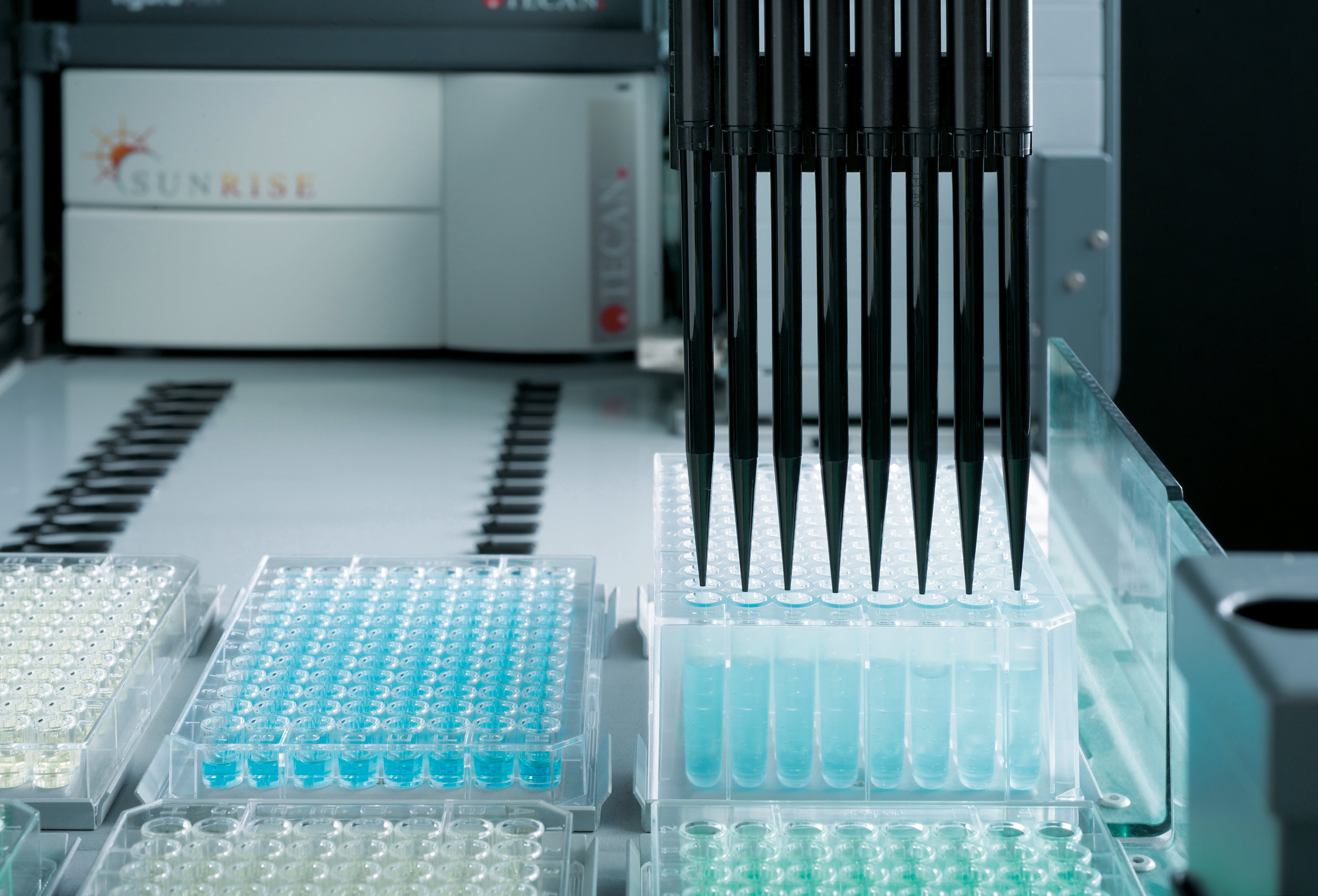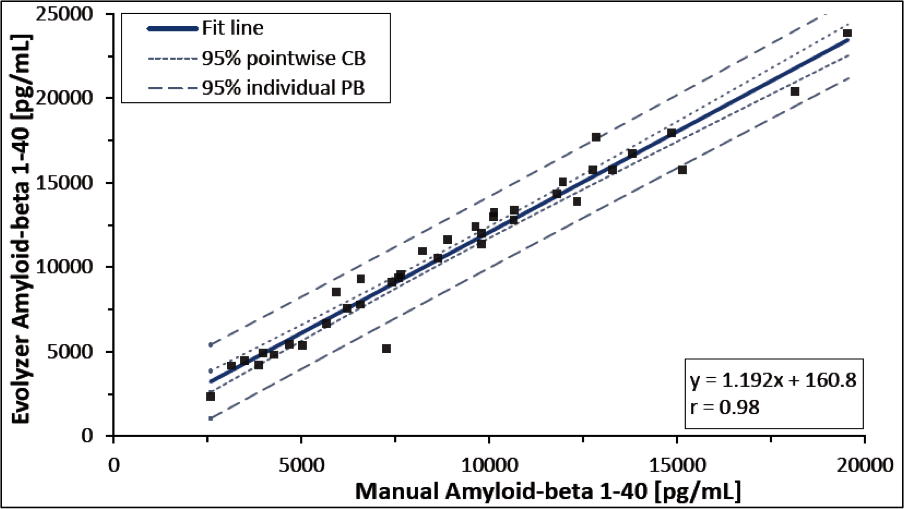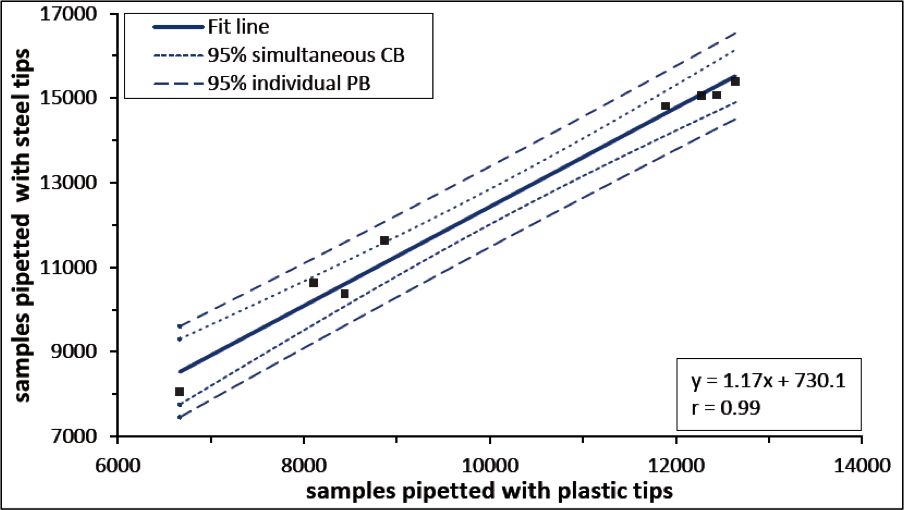By Magali Fischer
Automating robust assays is a way forward
Generating reproducible, accurate ELISA data starts with reliable reagents that are highly sensitive and specific. These are often available as kits that need to be incorporated into an efficient workflow. Unfortunately, running ELISA manually involves multiple manual wash processes and pipetting steps that are time-consuming, increase the risk for human error, and lead to poor reproducibility. Automation is the best route to smoothening the workflow and increasing data reliability.
Case study: Automation of ELISA to measure diagnostic biomarkers
The following example illustrates the benefits of automating ELISAs used to measure the biomarkers amyloid-beta (1–40), amyloid-beta (1–42), and total tau in the diagnosis of Alzheimer’s disease.
 Automation of manual ELISA based on high quality kits will boost performance to even higher levels of reproducibility.
Automation of manual ELISA based on high quality kits will boost performance to even higher levels of reproducibility.
Cerebrospinal fluid (CSF) biomarkers have been incorporated into the diagnostic criteria for Alzheimer’s disease because they have been found to reflect preclinical events as early as 10–15 years before clinical symptoms appear. These markers include amyloid-β peptide 1-40 (Aβ40), amyloid-β peptide 1-42 (Aβ42), total tau protein (t-tau), and tau phosphorylated at threonine 181 (p-tau).
Inter-site variability in data for total tau, phosphorylated tau and amyloid beta (1-42) has been reported (1). The ratio of Aβ42/Aβ40 is important in diagnostic accuracy (2), but variation seen in a multicenter validation of Aβ40 immunoassays between labs can complicate the determination of cut-offs (3). As van Waalwijk van Doorn states, the use of “automated platforms instead of manual performance of biomarker measurements could mitigate inter-laboratory variations” (3).
In another study on the variability of CSF biomarkers used to monitor Alzheimer’s, the authors concluded that, “the most significant source of the observed variability for CSF biomarkers is between-laboratory factors. Each laboratory procedure potentially contributing to variation needs to be examined in a specifically designed experimental study with a sufficiently large number of samples. In the end, the transfer of assays to fully automated instruments, and the reduction of kit lot-to-lot variability, may eventually reduce both within- and between-laboratory variations” (4).
Automation brings benefits
To test the effect of automating a manual ELISA kit, ELISA kits from IBL designed to measure amyloid-beta (1–40), amyloid-beta (1–42), and total tau were performed on an open platform automated instrument, Tecan Freedom EVOlyzer 150.
There was good correlation between values obtained by the manual and automated ELISAs (Figure 1). The variation in manual ELISA runs was already low [amyloid-beta (1–40), 2.8% CV; amyloid-beta (1–42), 2.1%] but was improved further by automation to 2.4% and 1.4% CV, respectively.*

Figure 1: Comparison of data from manual and automated ELISA for the measurement of amyloid-beta (1–40). CB, confidence band; PB, prediction band.*
Automation also opened up the possibility of using fixed steel tips that can reduce analyte loss and improve accuracy. In this case, the move from disposable plastic tips in manual or automated solutions to fixed steel tips reduced loss of the two hydrophobic amyloid-beta peptides to plastic surfaces, resulting in increased levels of the amyloid-beta isoforms measured by 16% and 19% (see Fig. 2).*

Figure 2. Comparison of results generated with disposable plastic tips and fixed steel tips. The fixed steel tips reduced loss of the two hydrophobic amyloid-beta peptides compared to plastic tips and increased the level of analyte measured. CB, confidence band; PB, prediction band.*
Transfer of ELISA kits to open systems
The novel ELISAs from IBL International used in this study to measure Aβ and tau levels in human CSF are based on highly specific antibodies together with robust protocols and are subjected to rigorous QC controls. As a result, they already show superb analytical performance in terms of assay specificities, linearity, precision, recovery, etc. when performed manually.
In this case study, we set out to determine whether automation could increase the assay reproducibility to an even higher level. As the results indicate, with guidance, ELISA test kits originally designed for manual protocols can be readily automated using open systems to improve performance, including better precision. Automation also opens up the possibility of using liquid handling that reduces the loss of analytes, such as hydrophobic biomolecules that stick to plastic surfaces. This approach will improve the reproducibility of data from preclinical and clinical research and also routine clinical diagnostics, both within labs and between labs.
Automation through collaboration
While ELISA may be easy to run manually, automating an ELISA requires experience and expertise to ensure the assay workflow is correctly programmed and running. Added to that, clinical research and diagnostics labs may want to measure a number of analytes in parallel.
These goals can be reached through collaboration with a suitable automation partner who can help ensure you have a system that is low cost, high-throughput, reproducible across labs, and able to deliver both high specificity and high sensitivity. The need for a broad range of tests also means that labs benefit from a partner who can provide them with a wide selection of reliable, pre-developed ELISA kits.
Tecan can help you automate your assays, including ELISAs. We have global expertise in the automation of assay protocols and access to a broad range of immunoassay kits (Tecan IBL) that can be transferred to open automation platforms. The result is access to complete solutions tailored to meet the analytical needs of your lab.
Learn more
Looking for a complex or customized assay automation solution? Contact us to discuss your assay and automation needs so that we can work together to design a complete solution. Our services include a feasibility analysis, workflow analysis, and application support to develop a customized automated solution with our range of immunoassays in your laboratory.
References
1. Dumurgier, J. et al. (2013) Intersite variability of CSF Alzheimer's disease biomarkers in clinical setting. Alzheimers Dement. 9 (4), 406-413
2. Vogelgsang, J. et al. (2018) Reproducibility of Alzheimer’s Disease Cerebrospinal Fluid-Biomarker Measurements under Clinical Routine Conditions. J. Alzheimer’s Disease 62, 203–212
3. van Waalwijk van Doorn et al, LJ, et al (2017). Multicenter Analytical Validation of Aβ40 Immunoassays. Front. Neurol. 8:310
4. Mattsson, N. et al. (2013). CSF biomarker variability in the Alzheimer's Association quality control program. Alzheimers Dement. 9 (3), 251-261
*The combined use of assays, process script and instrument has to be validated individually on site by each laboratory.
About the author

Magali Wolff
Magali Wolff is the Head of Global Reagent Marketing and Support at Tecan. She has been with the company since 2001. Magali and her team of product managers are dedicated to providing Tecan’s customers with the best service and quality products for their daily workflows.











